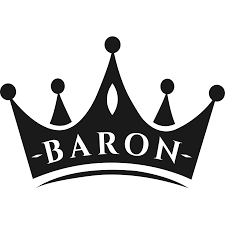
10 Traits of a Winning Social Media Business Profile
As a business, you cannot afford to ignore social media. Today, social networking platforms are where much of the action on the Internet is at. You need only look at the world’s most popular websites, most popular Android apps, and most popular iOS apps. Social media dominates the upper echelons of these lists. And it’s not just in terms of the sheer number of site visitors or app users. The average person spends much more time on social media than they do on most other websites and app categories. Creating a social media profile for your business is essential to tap into this vast potential.
Nevertheless, irrespective of the line of business you are in, you are bound to run into an intense contest for eyeballs. Virtually every small, medium and large enterprise has some social media presence of sorts. At the minimum, they’ll have a Facebook and LinkedIn pages. Those looking for a wider social media reach or trying to address a certain demographic will also have profiles on YouTube, Twitter, Instagram, TikTok, Pinterest, WeChat, Snapchat, etc.
But it’s one thing to have a business social media profile and entirely another to create one that clearly stands out from the competition. We take a look at the characteristics that best define successful social media business profiles.
Clear Correctly-Sized Profile and Background Image
A business social media profile without a profile image feels empty, amateur, and temporary. A profile image draws users into wanting to explore your profile. Ideally, the profile picture should be a clear, clean image of your business logo.
Networks such as Facebook and Twitter allow you to have a profile image as well as a background or cover picture. Whereas the profile image should be your logo, you have more flexibility when it comes to the background. Use the background image to provide more context of who you are and what you do. That could be your product range, customer testimonials, your product in use, industry awards, best in class lists, corporate social responsibility activity, or a picture of your office space.
Optimize your profile images. This is easy to do via simple desktop software such as Microsoft Paint. The actual dimensions vary from one social network to the next. Check out this guide for the recommended dimensions on major social networks. The recommended dimensions don’t mean you cannot upload an image with a different size. It only implies your image might be distorted and won’t look professional in certain views.
Think about and test out how the profile and background image will appear on mobile versus desktop or along with a user’s feed. Your profile image is the first impressions social media users will have of your business. Do everything needed to ensure it’s flawless.
Use the Same Image on All Your Social Media Profiles
A fundamental principle of business branding is consistency. Customers, prospects and site visitors should have the same impression of your business irrespective of where they run into it online or offline. The same rule holds true on social media. If your profile image features your brand logo, users should see the exact same image irrespective of what social network they are on. There are three benefits of image consistency.
First, it minimizes confusion. If someone sees one image on your Facebook profile but encounters a different one on your Twitter page, they might start to wonder whether both pages are authentic.
Second, identical images demonstrate a work culture of excellence. You’re not one to allow things to fall through the cracks.
Third, consistency gives you more opportunity to stay top-of-mind, thus reinforcing your brand’s identity on social media. The more users see the same message everywhere they see you, the more they will think about your business over the competition.
Consistent Handles
Consistent profile photos build brand recognition. So do consistent handles. If you have the same handle everywhere, it’s much easier for users to remember you and find you. It also makes it easier for users to mention and tag you on content that could give your brand positive publicity or otherwise alert you of a looming public relations crisis.
Consistent handles are, of course, harder to realize than consistent images. It depends on whether the handle you want is available on every network you are creating a business profile on. If you are fortunate to have a business name that’s highly unique, then handle consistency is easy. Many enterprises are, however, not as lucky.
Still, you can find handle consistency by getting creative. For example, if the handle ‘my business name’ isn’t available on all networks, you might have better luck with ‘mybusinessnameinc’, ‘mybusinessnameltd’, ‘mybusinessnameusa’, ‘mybusinessname.com’ etc. It’s better to modify the handle until you find one that’s unique instead of settling for different handles on different networks.
Choose the Right Keywords
Chances are that by the time you are setting up a social media business profile, you already have a website up and running. Your site is likely optimized for certain keywords in line with your product, industry, target market, and/or location. This is done for search engines, but you need to maintain the same approach for social media optimization as well. That’s important for two reasons.
First, your social media profiles will be crawled by Google and other major search engines. So if you pick the right keywords, your profile has a good shot at appearing on search results even when your business is not specifically mentioned. Second, billions of searches take place on social networks every day. Like search engines, social media searches depend on keywords when determining profile priority on search results.
To pick the right keyword phrases to use, find out what your prospects search for when looking for your type of product. Google Keyword Planner and Google Trends are a goldmine for such insights. Update your social media profile description with these keywords.
Complete Every Field
When you create a personal social media profile, you might prefer to leave certain fields blank. This is often done in an effort to safeguard your privacy. People don’t need to know your physical address, phone number, or even email address. Family, friends, and any other person you’d want to know that level of detail likely already have access to it via your interactions offline.
However, when it comes to a business social media profile, your goal is to be as reachable as possible. The more fields you complete, the better. That’s not all. A complete profile is perceived by users as more professional. Make sure you’ve filled out your business name, website, email address, phone number, and location. For the ‘About’ field (i.e., your business’ description), pay attention to what information you provide. We take a closer look at this field in the following section.
Social media networks will add or remove fields every so often, so regularly check to confirm your profile remains complete.
Make the ‘About’ Field Your Elevator Pitch
The ‘About’ field is your opportunity to sell your business in just one or two sentences. The actual amount of space you have here will vary depending on the network. Twitter, Instagram, and Facebook provide less than 161 characters for your business description, but on LinkedIn, you have as much as 2,000 characters.
Regardless of the character limit, think about your business’ description as an elevator pitch. What two or three things would you consider the highlights of your company? Use simple, concise, and engaging sentences to explain what your product does, what content your social media followers can expect on the page, and what action they should take if they need to enquire further.
Create a flowing narrative that, where possible, culminates in a call-to-action. The call-to-action could be anything from a link to a freebie to an email subscription form.
Cross-Promote Your Social Media Profiles
Your social media profile will have a field where you input your website. Naturally, you’d enter your business’ URL here. But you can extract more value from this field by including links to your profiles on other social media networks. How you do that will vary from network to network.
Facebook, for example, allows you to add multiple fields for your websites. You can thus have one for your actual site then have links to your social media profiles for the rest. On LinkedIn, there’s a specific section to add your Twitter account. Pinterest enables you to connect to your Twitter and Facebook profiles.
For social networks that only have one website field, your options for cross-promoting profiles are certainly limited. But you can mix and change it up on a regular basis, e.g., have your website on for a month and then a social media link the next month.
Change Your Profile According to the Season
Businesses often have offers available for certain shopping seasons of the year. The biggest sales season in North America takes place on Black Friday and Cyber Monday. But there may also be product offers that go with the four seasons, i.e., spring, summer, fall, winter. Other key shopping peaks include Christmas, Valentine’s Day, Back-to-School, Mother’s Day, Easter, 4th of July and St. Patrick’s Day.
The most successful businesses will tailor their marketing and product promotions to seize the moment. Since your social media profiles will be a key touchpoint in your interaction with prospects, the profile images, background picture, and business description should change in accordance with the season. Not every season will necessarily be relevant to your business, so only focus on those that are.
Note that other than the more static seasons, there are also more temporary trends—like a sudden large-scale event that dramatically increases the demand for a particular product. For example, the 2020 COVID-19 pandemic saw a rapid rise in purchases of toilet paper, hand sanitizer, antibacterial soap, surgical masks, and other PPE equipment. Businesses that have an interest in these product lines could use their social media profiles to show they have these items available.
Changes to your pages don’t necessarily have something to do with what you sell. It could be affirming solidarity with a cause. Many businesses, for example, modified their logos to show their support for social distancing calls as a means of stemming the spread of COVID-19.
Overall, making changes to your profile in line with the season is a great way to re-excite social media users and demonstrate you have your finger on society’s pulse.
Privacy Settings
Social media sites have quickly become some form of the online directory. When people are searching online for a product they are interested in, they expect the business’ social media profile to contain all the basic contact and business information they’d need to know.
Default privacy settings are sometimes more oriented towards protecting potentially sensitive information on personal social media profiles. Therefore, check the settings to confirm that default settings are not hiding the information you’d want access to the public.
Profile Promotion
If you’ve just created a business social media profile, it’s unlikely that you’ll see much traffic at the start. Social networks have advertising plans that you should take advantage of to kick start your profile’s publicity. The promotions will get your profile in the feed of persons who would be most interested in what you sell. As traffic to your page grows, you can eventually scale down or remove all advertising as and ride the momentum you’ve already created.
Wrapping Up
Whether you are looking to grow your business’ exposure online, connect with customers and prospects, grow your authority, or improve your reputation, a business social media profile can help you do that. Your profile will be one of the first results that show up when someone searches for your business on the Internet. So start to think about your profile in the same way you do your website’s landing page by bringing these ten traits to life. You’ll leave a lasting impression that can only augur well for your business over the long term.





